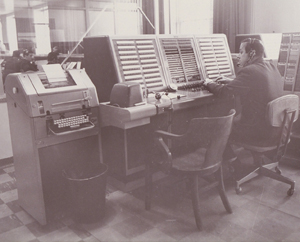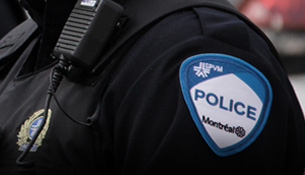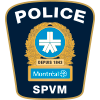History
 The first single phone number for reporting emergency situations was introduced in London, England, in July 1937. The number was 9-9-9. It connected callers to hospitals, emergency services and the police.
The first single phone number for reporting emergency situations was introduced in London, England, in July 1937. The number was 9-9-9. It connected callers to hospitals, emergency services and the police.
In the United States, the idea of creating a single emergency phone number was first proposed in 1957 by the National Association of Fire Chiefs. It was not until 10 years that the president of the Commission on Law Enforcement and Administration of Justice recommended the implementation of a single emergency phone line.
In November 1967, the Federal Communications Commission (FCC) asked the American Telephone and Telegraph Company (AT&T) to suggest a single phone number for reporting emergencies. The next year AT&T announced that 911 would be the nationwide number for contacting emergency services.
For AT&T, 911, like 9-9-9, was simple to remember and easy to dial. Also, it had never been used as an area code and it worked with the system designed by the North American Numbering Plan Administration (NANPA).
First 911 call in history
On February 16, 1968, Senator Rankin Fite made the first 911 call in US history, in Haleyville, Alabama. The 911 service in that city is still in operation today.
In March 1973, the White House telecommunications department tabled a national policy encouraging the use of 911 everywhere in the United States.
In Canada
Canada adopted 911 in 1972, and the first city to implement the system was London, Ontario, in 1974.
In Québec, it was Laval that first put 911 at the disposal of its residents, in 1977. The cities of Longueuil (1978), Baie-Comeau (1981) and Boucherville (1983) were next to follow suit.
On April 24, 1981, the Communauté urbaine de Montréal public security commission formed a task force – the Comité des mesures d’urgence – piloted by the mayor of Anjou, with the mandate to coordinate efforts to create an emergency communications centre (911).
On April 14, 1983, on the recommendation of the Comité des mesures d’urgence, the Executive Committee authorized Bell Canada to introduce the 911 emergency number across the CUM territory and created an implementation committee, under the direction of the mayor of Anjou, made up of representatives of the CUM police service, the Ville de Montréal, a suburban city, Urgences-santé and Bell Canada.
Then, in 1985, the CUM Executive Committee authorized the creation of the 911 Emergency Centre, reporting to the Direction générale, to centralize the processing of all emergency calls which, until then, had been directed to the police, fire and ambulance services. This centralization immediately sped up on-site intervention in emergencies.
The Centre officially began operations on December 1, 1985. It received all emergency calls from the CUM territory and directed them to the appropriate emergency services, and also offered telephone information (280-INFO) to the public on services offered by the CUM and the CUM transit corporation.
Before 911…
What did people do before the 911 service was introduced in Montréal in 1985? How did people contact the police before there was a centralized emergency number?
History tells us that the first emergency phone number in Montréal was “HARBOUR 7171,” although it is hard to say exactly when this number was in service.
We do know that in the early 1960s the number changed to “University 8-7654.” From the mid-1960s to 1970, when the Communauté urbaine de Montréal (CUM) was created, people called 872-1313 to reach the police. With the creation of the CUM, the emergency number for contacting the police changed to 934-2121.
Back then, the emergency number for the fire department was 872-1212, and the number to reach the ambulance service was 842-4242.
It all changed on December 1, 1985, with the advent of 911.



